Classic Gumbo with Andouille Sausage & Shrimp
- By Jennifer Segal
- Updated February 23, 2025
- 44 Comments
- Leave a Review
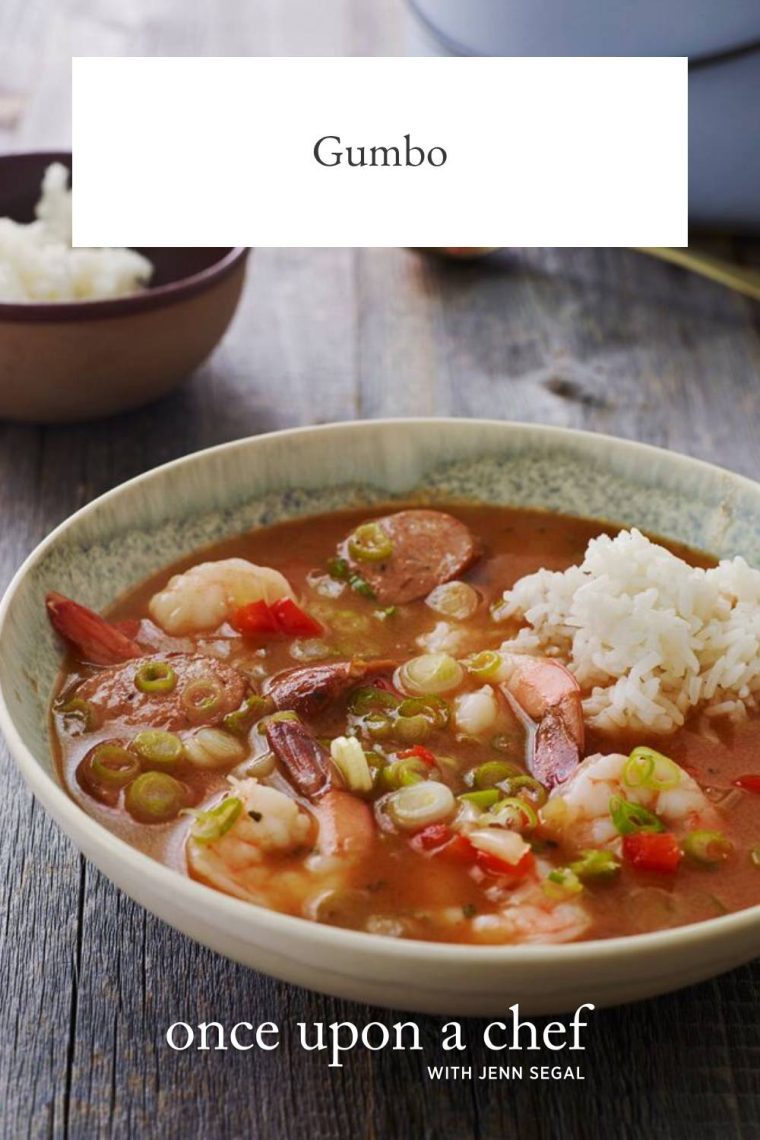
This post may contain affiliate links. Read my full disclosure policy.
Bring the flavor of the bayou home with this hearty gumbo recipe, packed with smoky andouille, plump shrimp, and bold flavor. This Southern classic is easier to make than you’d think!
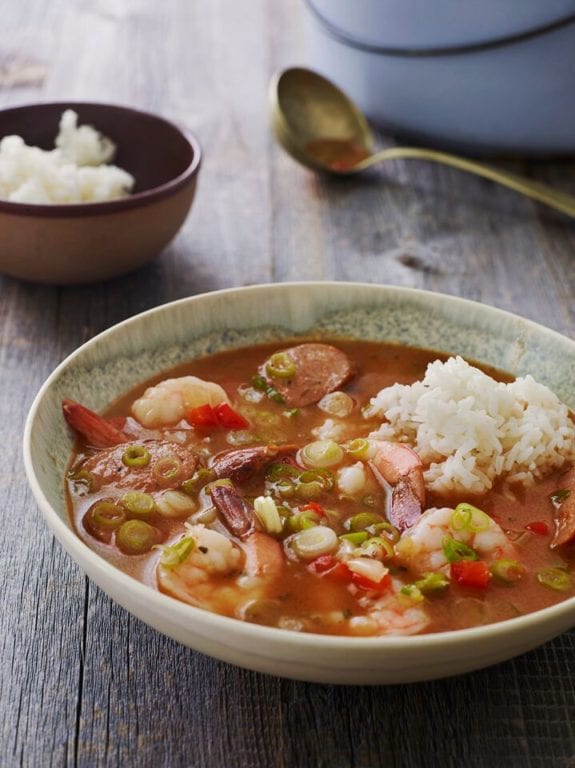
Photo by Alexandra Grablewski (Chronicle Books, 2018)
Gumbo isn’t just a cozy, comforting stew—it’s a dish that tells the story of Louisiana’s rich history, blending Creole and Cajun traditions with flavors from West African, French, Spanish, and Native American cooking. In fact, the name “gumbo” likely comes from ki ngombo, the West African word for okra.
There are countless ways to make gumbo, and every home and restaurant has its own spin. This version is deeply flavorful, easy to make, and uses ingredients you can find at any supermarket. But no matter the variation, two things are essential: a rich, deeply browned roux (pronounced “roo”)—a mix of fat and flour cooked until it’s the color of chocolate—and the holy trinity of onions, bell peppers, and celery, the aromatic base that gives gumbo its signature flavor.
If you love Southern flavors, there’s plenty more to explore! Try my classic shrimp and grits, a cornbread recipe that pairs with everything, or fried chicken sandwiches—crispy and juicy beyond compare!
“This gumbo is so tasty — there’s a depth of flavor and nice texture that I haven’t achieved with other gumbo recipes.”
What You’ll Need To Make Gumbo
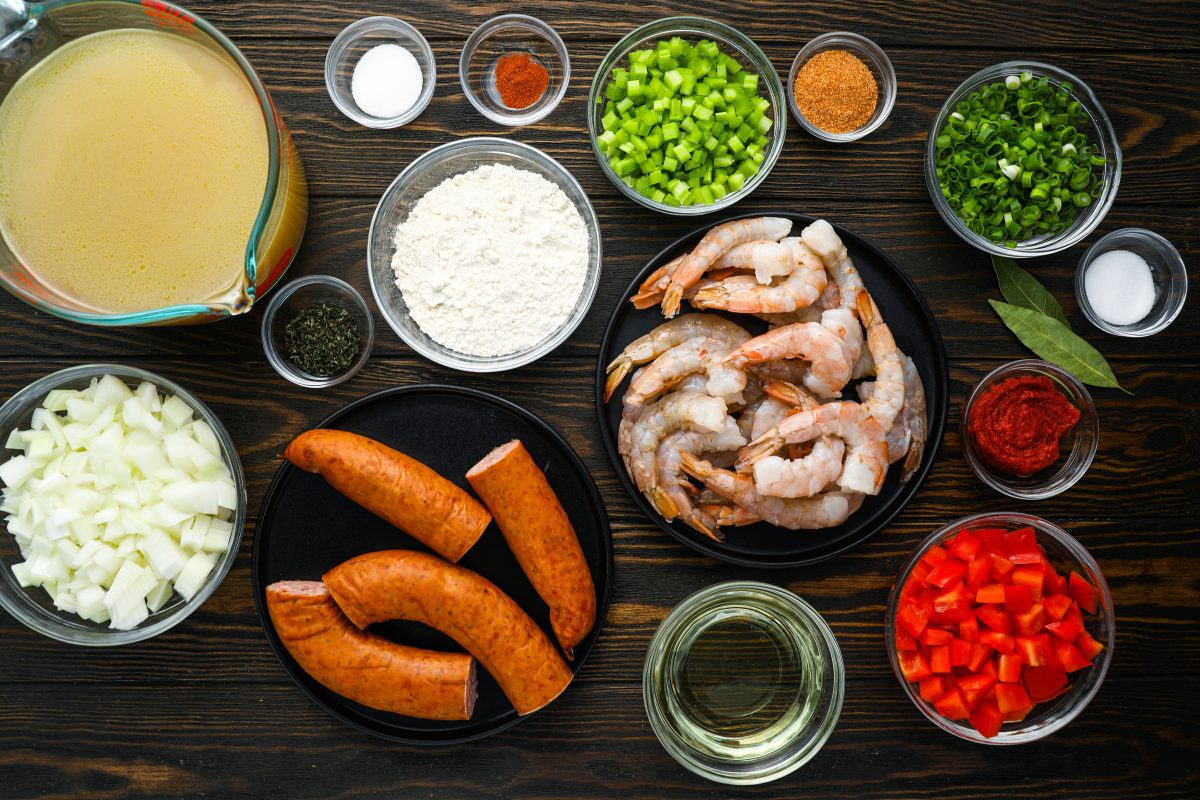
- Andouille (ahn-doo-ee) Sausage: A spicy, smoked pork sausage with roots in France but popular in Louisiana. In the supermarket, you’ll typically find it in the refrigerated meat section or alongside hot dogs and other specialty sausages. Since it’s already cooked, all you need to do is brown and heat it.
- Shrimp: Surprisingly, frozen shrimp can be fresher than what’s at the counter. Shrimp are usually flash-frozen right after being caught, preserving their freshness. “Fresh” shrimp at many counters were often frozen previously and then thawed, meaning they’ve been out of their frozen state longer.
- Holy Trinity: The heart and soul of many Louisiana dishes, this trio comprises onions, bell peppers, and celery. It acts as a flavorful foundation in recipes, capturing the essence of Louisiana cooking.
- Creole Seasoning: A spicy and aromatic blend of various herbs and spices, such as paprika, oregano, garlic powder, and cayenne pepper. It encapsulates the bold flavors of Louisiana. “Tony Chachere’s” or “Emeril’s Essence” are both widely recognized brands you can find in most supermarkets.
- Jump to the printable recipe for precise measurements
Step-By-Step Instructions
Heat a tablespoon of oil in a Dutch oven or large heavy pot over medium-high heat. Add the sausages and cook, turning occasionally, until they’re nicely browned on all sides—about 5 to 7 minutes. Once they’re done, transfer them to a cutting board and set them aside.
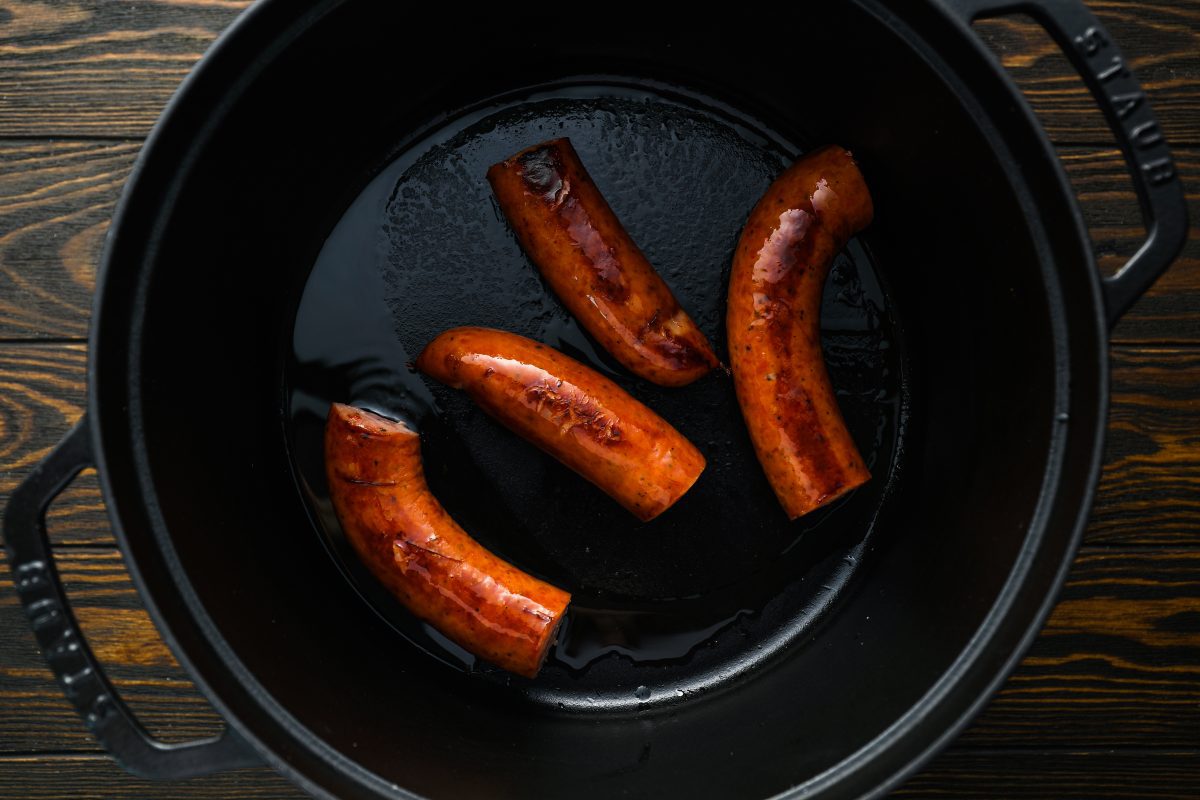
Now it’s time to make the roux, which does double duty—it thickens the stew and adds a deep, rich flavor. Depending on the recipe, roux can range from a light tan to a deep chocolate brown. The darker it gets, the more complex the flavor, but patience is key—you’ll want to cook it low and slow to avoid burning.
To start, lower the heat to medium and add the remaining 6 tablespoons of oil to the pot. Stir in the flour, and you’re on your way!
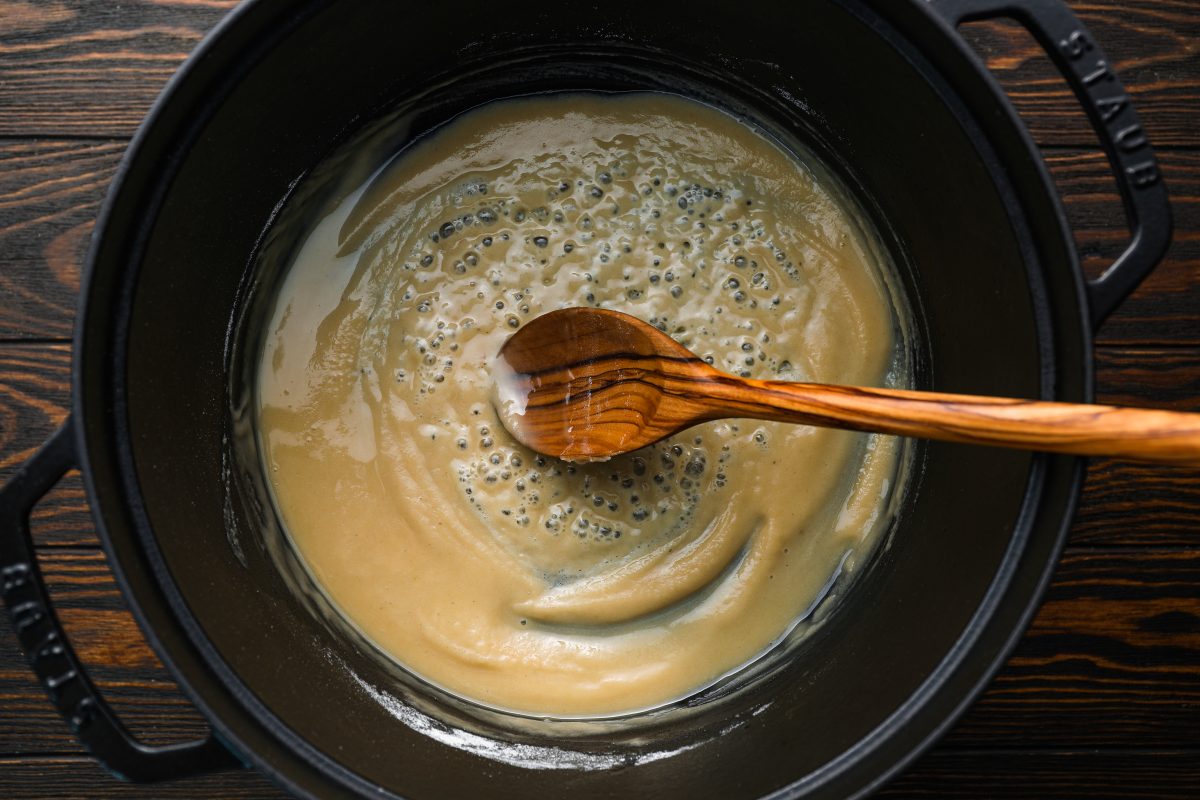
Keep stirring slowly and constantly with a wooden spoon, making sure to scrape the corners of the pot so it cooks evenly. You’re looking for the roux to turn the color of milk chocolate. This can take anywhere from 5 to 15 minutes, depending on your pot and heat level. As it browns, you’ll notice a toasty, nutty aroma—that’s exactly what you want! But if it starts smoking, lower the heat or take the pot off the burner for a moment to prevent burning.
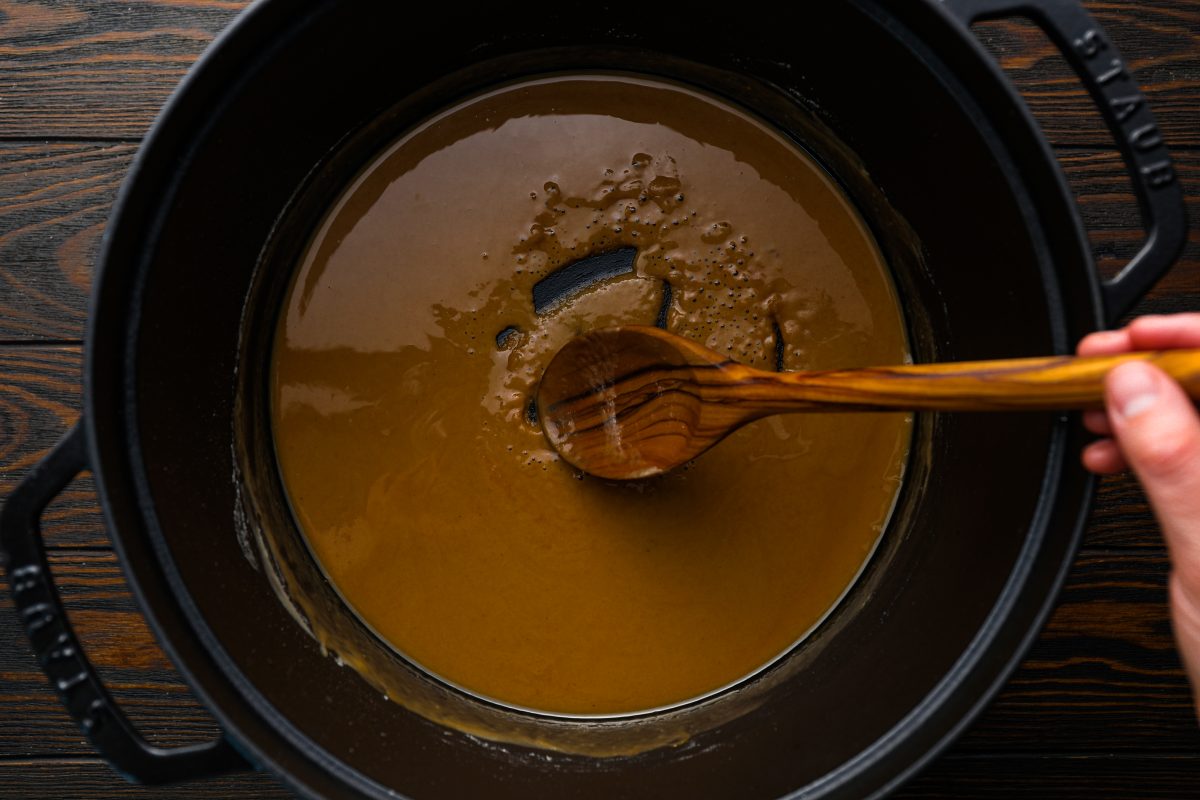
Stir in the onion, celery, and bell pepper—aka the holy trinity. Cook, stirring often, until the veggies soften and meld with the roux, about 7 to 9 minutes.
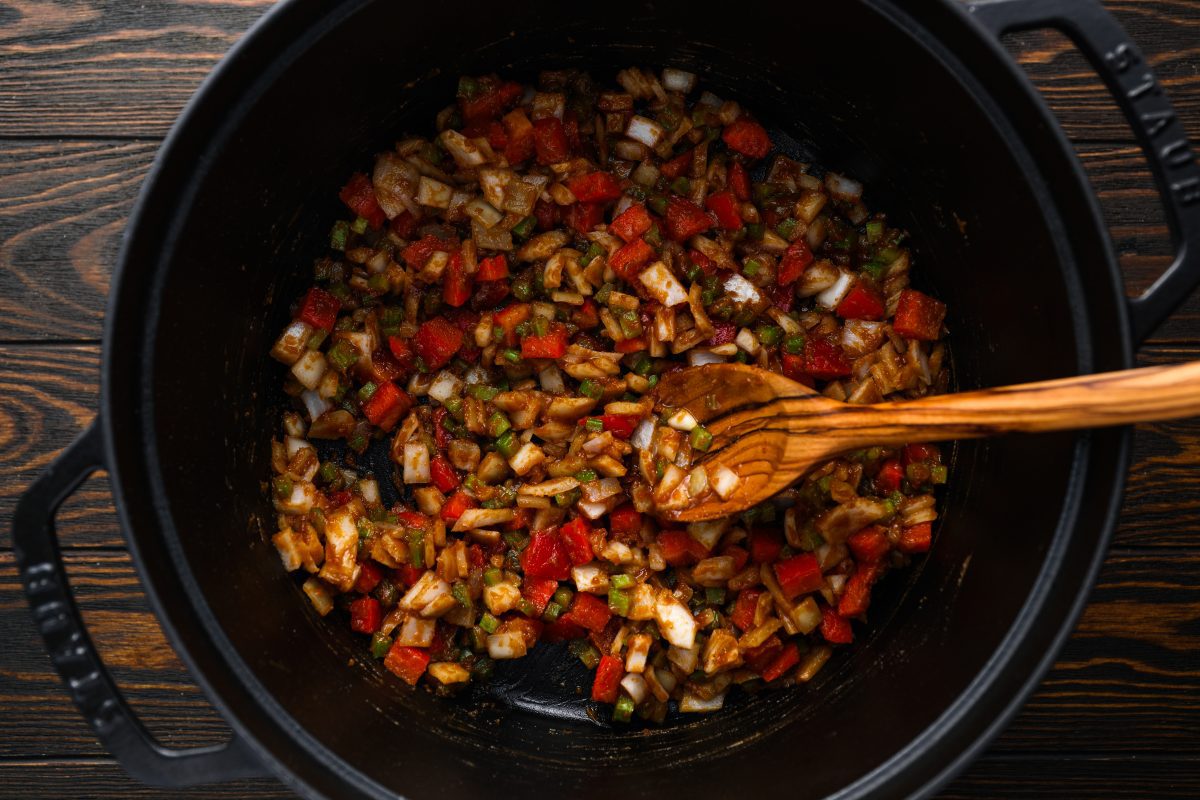
Slowly pour in the chicken broth, whisking as you go to incorporate the roux. Be sure to scrape the bottom and corners of the pot to keep everything smooth. If it looks like the roux isn’t fully blending in, don’t worry—once it comes to a boil, it will all come together!
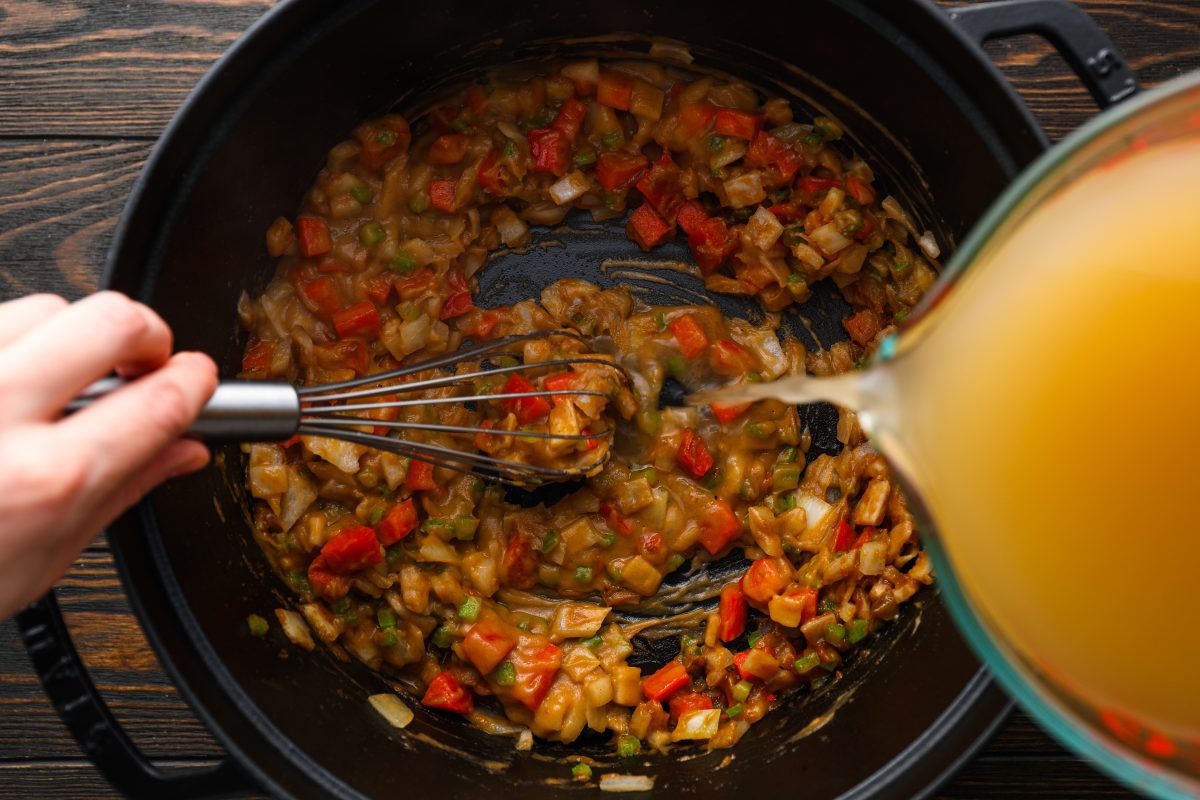
Stir in the tomato paste, salt, sugar, cayenne (if using), Creole seasoning, thyme, and bay leaves. Bring the mixture to a boil, stirring frequently and making sure to scrape the bottom and corners of the pot where the roux may settle. Once boiling, reduce the heat and let it simmer uncovered for 20 minutes.
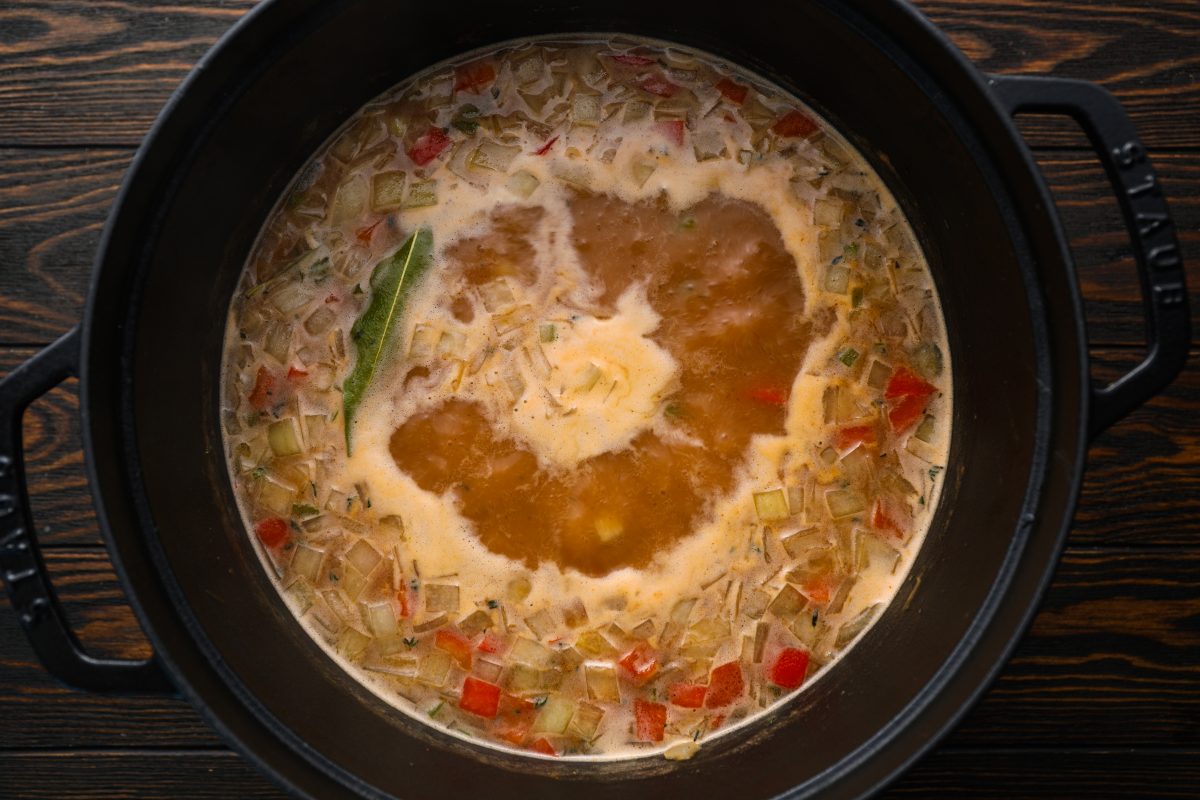
Meanwhile, slice the browned sausages on a diagonal into ½-inch pieces. Add the sausage and shrimp to the gumbo and let it simmer for 3 to 4 minutes, just until the sausage is heated through and the shrimp turn opaque. Be careful not to overcook the shrimp!
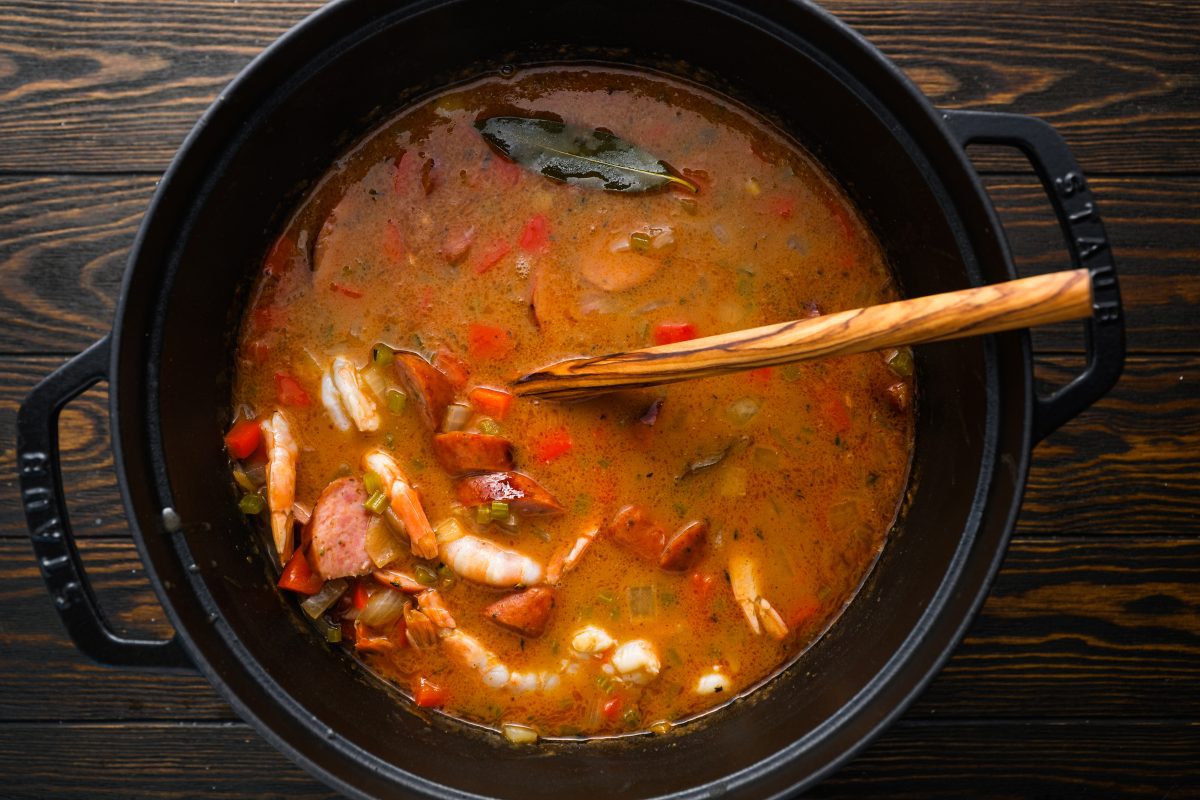
Remove and discard the bay leaves, then stir in the scallions. Give it a taste and adjust the seasoning if needed. To serve, spoon white rice into bowls and ladle the gumbo around the rice. Enjoy!

You can prep this gumbo recipe partially ahead, stopping just before adding the sausage and shrimp. When ready to serve, simply bring the broth to a simmer and finish the recipe. Gumbo is best fresh, but leftovers freeze well for up to 3 months—just thaw overnight in the fridge and reheat gently over low heat. If freezing leftovers, store the rice separately to prevent it from turning mushy.
Variations on Gumbo
Gumbo comes in all kinds of variations, so feel free to make it your own based on what you have on hand or what your family loves. Some classic combos include:
- Chicken & Sausage Gumbo – A Cajun favorite made with bone-in chicken thighs for extra richness.
- Seafood Gumbo – A briny, flavorful mix of shrimp, crab, crawfish, and sometimes oysters.
- Duck Gumbo – A heartier, slightly gamey version, often paired with sausage for a smoky kick.
- Okra or Filé Gumbo – Thickened with either okra (cooked in the stew) or filé powder (sprinkled in at the end), depending on tradition.
Video Tutorial
More Southern Recipes You May Like
Classic Gumbo with Andouille Sausage & Shrimp

Ingredients
- 7 tablespoons vegetable oil, divided
- 1½ pounds smoked Andouille sausage (see note)
- ¾ cup all-purpose flour
- 1½ cups chopped yellow onions, from one large onion
- 2 stalks celery, diced
- 1 red bell pepper, seeded and diced
- 7 cups low-sodium chicken broth
- 2 tablespoons tomato paste
- 1 teaspoon salt
- 1 teaspoon sugar
- ¼ teaspoon cayenne pepper (optional)
- 2½ teaspoons Creole seasoning, such as Emeril's Essence or Tony Cachere's
- 1 teaspoon chopped fresh thyme (or ½ teaspoon dried)
- 2 bay leaves
- 1½ pounds large shrimp, peeled and deveined
- ½ cup chopped scallions, white and green parts, from about 4 scallions
- Cooked white rice, for serving
Instructions
- In a Dutch oven or large, heavy-bottomed pot, heat 1 tablespoon of the oil over medium-high heat. Add the sausages and brown on all sides, 5 to 7 minutes. Set the browned sausages aside on a cutting board.
- Lower the heat to medium and add the remaining 6 tablespoons (90 ml) of oil to the pot. Add the flour and cook, stirring slowly and constantly with a wooden spoon and making sure to scrape the corners of the pot, until the roux turns the color of milk chocolate. Depending on the type of pot you use, this process can take anywhere from 5 to 15 minutes; be patient to get the right color. (The roux will smell toasty as it browns—that’s okay, but if it starts to smoke at any point, turn the heat down or remove the pot from the heat for a moment.)
- Add the onion, celery, and bell pepper and cook with the roux, stirring frequently, until softened, 7 to 9 minutes.
- Gradually add the chicken broth, whisking to incorporate the roux as you go, and making sure to scrape the bottom and corners of the pot. Don’t worry if it looks like the roux isn’t blending with the broth; it will come together once it boils.
- Stir in the tomato paste, salt, sugar, cayenne (if using), Creole seasoning, thyme, and bay leaves. Bring to a boil, stirring frequently and scraping the bottom and corners of the pot where the roux may settle. Turn down the heat and simmer, uncovered and stirring occasionally, for 20 minutes.
- Meanwhile, cut the browned sausages on a diagonal into ½-inch (12-mm) slices.
- Add the sliced sausage and shrimp to the gumbo and simmer until the sausage is heated through and the shrimp are just cooked, 3 to 4 minutes.
- Remove and discard the bay leaves, and then stir in the scallions. Spoon white rice into bowls and ladle the gumbo around the rice.
- Make-Ahead/Freezing Instructions: The gumbo can be partially prepared, one day ahead of time, up until the point where you add the sliced sausage and shrimp to the broth. Before serving, simply bring the broth to a simmer and then proceed with the recipe. Leftover gumbo can be frozen in an airtight container for up to 3 months. Thaw in the refrigerator overnight before reheating. When reheating, bring it to a gentle simmer over low heat. Be mindful that shrimp can become slightly tougher when reheated.
- Andouille is a seasoned and smoked sausage made from pork, most often associated with Louisiana Creole cuisine. You can usually find it in the cooked sausage section of your supermarket—and, since it’s already cooked, all you need to do is brown and heat it.
Pair with
Nutrition Information
This website is written and produced for informational purposes only. I am not a certified nutritionist and the nutritional data on this site has not been evaluated or approved by a nutritionist or the Food and Drug Administration. Nutritional information is offered as a courtesy and should not be construed as a guarantee. The data is calculated through an online nutritional calculator, Edamam.com. Although I do my best to provide accurate nutritional information, these figures should be considered estimates only. Varying factors such as product types or brands purchased, natural fluctuations in fresh produce, and the way ingredients are processed change the effective nutritional information in any given recipe. Furthermore, different online calculators provide different results depending on their own nutrition fact sources and algorithms. To obtain the most accurate nutritional information in a given recipe, you should calculate the nutritional information with the actual ingredients used in your recipe, using your preferred nutrition calculator.
See more recipes:
Comments
Add a Comment Cancel reply
This site uses Akismet to reduce spam. Learn how your comment data is processed.







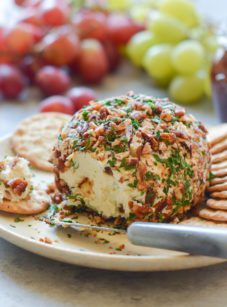
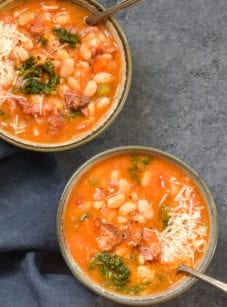

I followed the directions exactly. WOW! The time was so worth it. My husband asked numerous times “did you save this one?” It was awesome and special. The downside is that I might be asked to make it every week! Thank you!